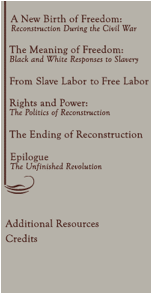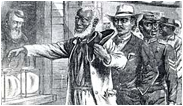Lesson Plan Title:
Understanding Reconstruction, Part 1 – The First Stage of Reconstruction
Note: This
is lesson 1 of a 4 lesson unit on Reconstruction.
Author:
Jason Boe, done to fulfill expectations of Year 2 for TAH Grant
Concept / Topic To Teach: Reconstruction
Minnesota Academic Standard
Addressed:
1. The
student will demonstrate knowledge of the consequences of the Civil War and
Reconstruction.
General Concept to Teach
(taken directly from the Minnesota Social Studies Academic Standards):
1. Union
occupation, African Americans’ efforts for economic and political improvements,
Freedmen’s Bureau, Presidential Reconstruction, Radical Reconstruction,
“redemption” and the reemergence of white supremacy in the South, rise of the
Ku Klux Klan
2. Emancipation
Proclamation, Gettysburg Address, curbs on wartime civil liberties; issues of
citizenship, enfranchisement, political participation; 13th, 14th,
and 15th Amendments to the Constitution, debates over them, and
interpretations of them by the Supreme Court
Specific Objectives (taken
directly from the Minnesota Social Studies Academic Standards):
1. Students
will describe the content of and reasons for the different phases of
Reconstruction, and analyze their successes and failures in transforming social
and race relations.
2. Students
will understand and explain the political impact of the war and its aftermath
in Reconstruction, including emancipation and the redefinition of freedom and
citizenship, expansion of the federal bureaucracy; expansion of federal
authority and its impact on states’ rights.
Required Materials:
1. A
simple jigsaw puzzle of the United States – preferably one where each state has
its own separate puzzle piece. If
you can find a jigsaw puzzle of the United States during the Civil War, even
better. You can also print out a
map of the United States (cca. Civil War) and cut out the states and
territories.
2. Map
of Former Confederate States found at: http://videoindex.pbs.org/resources/civilwar/images/cwmap02.jpg
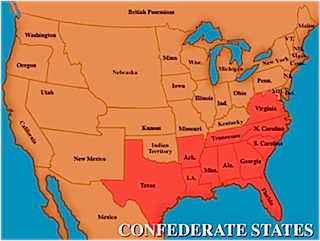
3. Quotes
by Stevens and Lincoln found within lesson (below)
4. Introductory
Reconstruction Reading found at (attached
after lesson): http://www.digitalhistory.uh.edu/reconstruction/section4/section4_intro.html
5.
Reuniting
the Union: A Chronology. It can be found on the Gilder Lehrman website (also attached after lesson): http://www.gilderlehrman.org/teachers/module_pop_intro.php?module_id=307&reading_id=174
6.
Picture of Representative Thaddeus Stevens of
South Carolina: http://www.house.gov/pitts/images/thaddeus-stevens.jpg
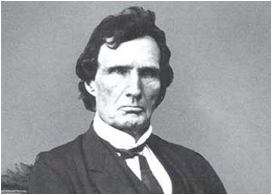
7.
Picture of Senator Charles Sumner of
Massachusetts: http://www.old-picture.com/mathew-brady-studio/pictures/CharlesSumner.jpg
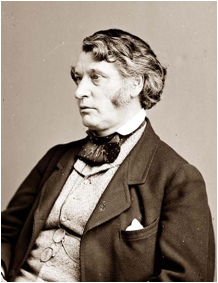
8.
Picture of Lincoln’s Assassination: http://mrcapwebpage.com/VCSUSHISTORY/Assassination.jpg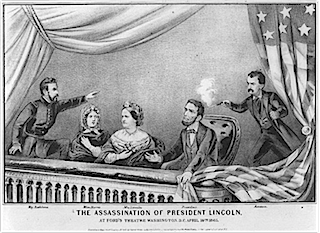
9.
Edwin H. MCCaleb’s letter regarding Lincoln’s
death (attached after lesson): http://www.digitalhistory.uh.edu/documents/documents_p2.cfm?doc=180
10.Photo of Andrew Johnson. It can be found at: http://www.independent.co.uk/multimedia/archive/00113/andrew-johnson_113856t.jpg
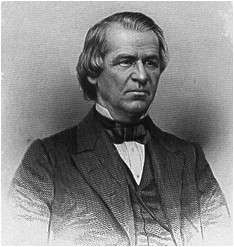
11. Reconstruction Plan Rubric (attached after lesson):
Anticipatory Set (Lead-In):
1. Be
sitting in the front of the room, putting a puzzle of the United States
together. Have your back towards
your students as they walk in.
Show consternation, seem oblivious. The only pieces of the puzzle left to put together are those
of the former Confederate States, but you’re having a tough time putting them
with the rest of the puzzle. They
look like they should fit, but it just isn’t working. It’s like trying to put a square peg in a round hole. Let your students stew and question for
awhile. Ignore for awhile until
all see what you are trying to do, and then wait until you hear the following,
inevitable question…
STUDENT: Mr./Mrs. ___________, what are you doing?
Now you need to wave all the students over to the
table you are working on, and tell them the following:
TEACHER: I’m trying to put the country
back together.
Undoubtedly, they will ask questions and maybe
even question your sanity. They
may also try to help; don’t let them.
Hold your reserve. After
you feel you have made your point, make the following claim:
TEACHER: This
is exactly the trouble our country had after the Civil War. It needed to be put back together
again, but it would not be easy.
Not all people agreed on how to it should be done and how the South should
be treated.
HAVE
THE FOLLOWING QUOTE POSTED FOR ALL TO SEE IN YOUR CLASSROOM. CHOOSE A STUDENT TO READ IT OUT LOUD.
“I have never desired bloody
punishments to any extent, even for the sake of example. But there are
punishments quite as appalling and longer remembered, than death. They are more
advisable, because they would reach a greater number. Strip the proud nobility
of their bloated estates; reduce them to a level with plain republicans; send
them forth to labor, and teach their children to enter the workshops or handle
the plow, and you will thus humble the proud traitor.”
-THADDEUS STEVENS, REPUBLICAN CONGRESSMAN (December, 1865)
GIVE
THE STUDENTS TIME TO COMPREHEND THE QUOTE AND THEN ASK:
TEACHER: Simply put, what does Mr.
Stephens want to do to the South?
ANSWER: He wants to punish the South
and have them suffer.
"With malice toward none; with charity for all; with firmness in the right, as God gives us to see the right, let us strive on to finish the work we are in; to bind up the nation’s wounds; to care for him who shall have borne the battle, and for his widow, and his orphan—to do all which may achieve and cherish a just and lasting peace among ourselves and with all nations.
-ABRAHAM LINCOLN -MARCH 4, 1865 - Lincoln's Second Inaugural Address
GIVE
THE STUDENTS TIME TO COMPREHEND THE QUOTE AND THEN ASK:
TEACHER: How is Lincoln’s quote
different than Steven’s?
ANSWER: Much more forgiving and lenient
You may wish to ask the student’s their initial
opinion on the topic. Should the
South be punished as Thaddeus Stevens implies or should a more lenient approach
be used as Lincoln suggests?
Discuss possible pros and cons of each philosophy. Let students argue but make sure they
use sound reasoning.
STEP-BY-STEP PROCEDURES:
2. Write the following questions on the board:
a.
On what terms should the defeated Confederacy be reunited with the Union?
b.
Who should establish these terms, Congress or the President?
c.
What should be the place of the former slaves in the political life of the
South?
Tell students that these were
the major questions that will be debated and haggled over when it comes to
Reconstruction. Have them write
these questions in their notebooks.
You may also wish to use the
following introductory reading from the Digital History website that discusses
the aforementioned questions.
It can be found at the
following web address: http://www.digitalhistory.uh.edu/reconstruction/section4/section4_intro.html
3. Tell students that Lincoln had thought about the process of
restoring the union as early as 1863 – well before the end of the Civil
War. His goals were to restore the union as fast as possible and not to
punish the South. In late
1863, he announced his formal plan of restoring the south into the union in his
Proclamation of Amnesty and
Reconstruction.
Provide students with Lincoln’s
Reconstruction Plan (The 10 Percent Plan) by passing out the Reuniting the Union: A Chronology. It is the first event on the
timeline. It can be found on the
Gilder Lehrman website.
The address is: http://www.gilderlehrman.org/teachers/module_pop_intro.php?module_id=307&reading_id=174
Summarize Lincoln’s Plan for
Reconstruction on the board.
Discuss with students.
4. Not all Republicans agreed with Lincoln’s Plan. Many opposed pardoning former
Confederates and allowing them to hold office. They doubted the loyalty of these ex-Confederates.
Those who disagreed most with
Lincoln’s speedy and lenient reconstruction plan were called Radical Republicans. Post the following pictures of the most
outspoken Radical Republicans up for students to see.
Representative Thaddeus
Stevens of South Carolina: http://www.house.gov/pitts/images/thaddeus-stevens.jpg
Senator Charles Sumner of
Massachusetts: http://www.nobleednews.com/CharlesSumner.jpeg
Remind students that the
quote given earlier in the lesson regarding the punishment of the south was
from Thaddeus Stevens.
Make it clear to students
that these two men did not represent the views of all Radical Republicans—they
were just two of the most outspoken.
Some Radical Republicans had genuine agendas while others had selfish
ones. Both these men were quite extreme. You may wish to discuss each man’s view
specifically.
Most Radical Republicans did
agree on the following:
a. It was Congress and not the
President who should dictate the rules for allowing the south back into the
union.
You may also wish to discuss
the political aspect of reconstruction as well and what this would do to the
Republican Party. Have them
speculate on why the Republican Party would be worried about having southern
states back in the union.
5. Now discuss Congress’s response to Lincoln’s 10 Percent
Plan: the Wade-Davis Bill. This is
the next event on the Reuniting the
Union: A Chronology. It is the
second event on the timeline. It
can be found on the Gilder Lehrman website.
The address is: http://www.gilderlehrman.org/teachers/module11/into_pop2.html
Summarize the Wade-Davis
Bill. Put side-by-side with
Lincoln’s Plan which should still be on the board. Ask students to note the major differences, and then ask
students to speculate on why Lincoln would veto this bill.
6. Now display the following photo: http://mrcapwebpage.com/VCSUSHISTORY/Assassination.jpg
This photo is a newspaper
sketch of the assassination of Abe Lincoln by John Wilkes Booth. Tell students that Lincoln’s
assassination occurred on Good Friday, April 14, 1865. This was 5 days after Lee’s surrender
at Appomattox – the day/event most historians deem as the end of the Civil
War.
Let students look at picture
for awhile. Answer any questions
they may have regarding the assassination and why Booth did it. Provide background information where
you see appropriate. It may be important to note that Booth was a racist and
Lincoln had mentioned that some blacks should be given the right to vote.
Tell students that incredible
sorrow had gripped the nation upon Lincoln’s death. Though many white southerners had despised Lincoln, many had
started to realize that he was a wise, compassionate leader who offered them
the best hope for a fair and reasonable plan of reconstruction.
Simply put, this was a major
blow for instituting a fair and just plan of reconstruction.
If time permits, provide
students with the following primary resource found on the Digital History
website. The address is: http://www.digitalhistory.uh.edu/documents/documents_p2.cfm?doc=180
The document is a letter written
by Edwin H. McCaleb, s former Confederate supporter writing a letter to
northern friends. The letter
discusses his sadness regarding the assassination of Abraham Lincoln and how he
and others distrust the new president, Andrew Johnson. This is a good way to strengthen the
point of Lincoln’s importance with the reconstruction efforts of the country.
7.
Now display the following photo of Andrew
Johnson. It can be found at: http://www.independent.co.uk/multimedia/archive/00113/andrew-johnson_113856t.jpg
Provide appropriate
background information regarding Johnson.
Explain why he was chosen as Lincoln’s vice president and differences
between Lincoln and Johnson.
Important point to make: Johnson was not a flexible
man. He did not try to understand
other political positions like Lincoln did. He was not patient and very stubborn when it came to his own
views.
One of the first things that
Johnson does is offer awards for the arrests of Jefferson Davis and other
high-standing Confederates. Most
Radical Republicans are pleased with this. They believe he will support their
plan for Reconstruction. He does
not, and will offer his own plan shortly.
8. Refer students back to the Reuniting the Union: A Chronology. It is the fifth event on the timeline. It can be found on the Gilder Lehrman
website.
The address is: http://www.gilderlehrman.org/teachers/module_pop_intro.php?module_id=307&reading_id=174
This addresses Johnson’s Plan
for Reconstruction.
Summarize Johnson’s plan on
the board alongside of Lincoln’s and Congress’s.
Closure
(Reflect Anticipatory Set):
9.
Refer back to the 3 main questions surrounding
Reconstruction that were given at the beginning of the lesson:
a.
On what terms should the defeated Confederacy be reunited with the Union?
b.
Who should establish these terms, Congress or the President?
c.
What should be the place of the former slaves in the political life of the
South?
Discuss how each of the 3
plans answers these questions.
Compare and contrast the plans.
Discuss this as a whole group.
For fun, you may have the students vote on the 3 proposals and see what
plan most of the class agrees on.
Assessment:
10.
Students are to write their own plans for
Reconstruction via a persuasive essay.
They may take parts from the 3 plans or come up with their own
ideas. They will present these plans
during the next class period. They
must also provide reasoning for every part of their plan. Rubric is attached at the end of the
lesson.
Introductory Reconstruction Reading
|
|
|
|
|
|
|
|
|
|
|
|
|
|
|
|
|
||||
|
|
|
|
|
|
|
||||||||||||||
|
|
|
|
|
||||||||||||||||
|
|
|
|
|
|
|
||||||||||||||
|
|
|
|
|
|
|
||||||||||||||
|
|
|
Introduction Reconstruction was an era of unprecedented political conflict and
of far-reaching changes in the nature of American government. At the national level, new laws and constitutional amendments
permanently altered the federal system and the definition of citizenship. In the South, a politically mobilized black community joined
with white allies to bring the Republican party to power, while excluding
those accustomed to ruling the region.
The national debate over Reconstruction centered on three
questions: On what terms should the defeated Confederacy be reunited with
the Union? Who should establish these terms, Congress or the President? What should be the
place of the former slaves in the political life of the South?
As a result, Congress overturned Johnson's program. Between 1866 and 1869, Congress enacted new laws and the
Fourteenth and Fifteenth amendments to the Constitution, guaranteeing blacks'
civil rights and giving black men the right to vote. These measures for the first time enshrined in American law the
principle that the rights of citizens could not be abridged because of race.
And they led directly to the creation of new governments in the South elected
by blacks as well as white - America's first experiment in interracial
democracy. |
|
||||||||||||||||
|
|
|
Copyright 2003 |
|
||||||||||||||||
Reuniting
the Union: A Chronology
|
|
||||||||||||||||||||||||||||||||||||||||||||||||||||||||||||||||||||||||||||||||||||||||||||||||||||||||||||||||
|
|
|
|
||||||||||||||||||||||||||||||||||||||||||||||||||||||||||||||||||||||||||||||||||||||||||||||||||||||||||||||
Edwin H. McCaleb’s Letter regarding Lincoln
|
||||||||||
|
||||||||||
|
|
||||||||||
Reconstruction Plan Essay Rubric – U.S. History
Directions: Student is to write their own Reconstruction
Plan. They may use any parts of
Lincoln’s 10 Percent Plan, Congress’s Plan (via the Wade-Davis Bill), or
Johnson’s Plan. They may also come
up with their own ideas. They must
use sound reasoning when writing their essay and follow the guidelines followed
in this rubric.
|
Area |
Criteria |
Score 10/5 = always/excellent 8/4 =
frequently/very good 6/3 =
sometimes/good 4/2 =
seldom/fair 2/1 =
never/needs
improvement |
Student Score for each area |
|
Introduction to Reconstruction Plan |
Includes a hook to
get the reader's attention (5 POINTS) |
|
|
|
|
Background/Elaboration
from “the hook” (5 POINTS) |
|
|
|
|
Goal of Plan/Thesis
statement is clear (10 POINTS) |
|
|
|
First Part of Reconstruction Plan |
Topic sentence states the reason. (10 POINTS) Elaboration to back the reason is clear and persuasive. (10 POINTS) |
|
|
|
Second Part of Reconstruction Plan |
Topic sentence states the reason. (10 POINTS) Elaboration to back the reason is clear and persuasive. (10 POINTS) |
|
|
|
Third Part of Reconstruction Plan |
Topic sentence states the reason. (10 POINTS) Elaboration to back the reason is clear and persuasive. (10 POINTS) |
|
|
|
What will be some opposing viewpoints to your plan? How will you argue them? |
Topic sentence states the opposing view. (10 POINTS) Rebuttal is clear and makes sense. (10 POINTS) Elaboration to back the rebuttal is clear and persuasive. (10 POINTS) |
|
|
|
Conclusion – Why should we support your plan? |
Paraphrase of main points (5 POINTS) Restate thesis statement. (5 POINTS) Personal comment or a call to action. (10 POINTS) |
|
|
|
Writing Mechanics |
Sentences make sense (5 POINTS) |
|
|
|
|
Spelling (5 POINTS) |
|
|
|
|
capitals, punctuation (5 POINTS) |
|
|
|
|
word usage; transition signals (5 POINTS) |
|
|
|
TOTAL |
POINTS
(out of 150) |
|
|


